MECCA’s Customer Support Centre stays put, but Studio Tate’s interior design has added totally new layers of colour and energy to the space.

March 20th, 2024
This story originally appeared in INDESIGN #90, the ‘City Futures’ issue – get your copy here.
Beauty is big business and there’s perhaps no more successful Australian beauty enterprise than MECCA. It was founded by Jo Horgan and recently marked a quarter-century, all off the back of a ridiculously simple yet totally genius idea to bring an edit of global beauty brands to consumers all in the one place.
For anyone who has ever shopped in a MECCA store, you’re most likely familiar with the adrenalin rush that comes with it. Products from brands not available anywhere else in the country catch your eye left, right and centre, and knowing which one to pay attention to becomes a dizzying tease. Staff are lovely and attentive, the lights are bright, as is the colour, and there’s a palpable buzz – it’s a feel-good experience that’s equal parts immersive and welcoming.

So, when it came to renovating MECCA’s headquarters in Richmond – the MECCA Support Centre – Horgan and her team, including MECCA’s Retail Design and Development team, wanted to create a space that was likewise energising, inviting and warm. Hassell completed the workplace strategy and Horgan engaged Studio Tate to deliver the interior architecture, with a brief that focused on functionality but was also about being aspirational.
“We don’t like to use the word beautiful too often but for this project, given the client, the word beautiful is relevant,” says Studio Tate Director, Alex Hopkins, who worked with Associate Director and interior architecture lead for the project, Anita Zampichelli.

“It needed to be comfortable but beautiful, and had to reinforce MECCA’s brand narrative, which combines luxury everyday essentials while fostering a thriving sense of community for team members and visitors. All of the MECCA stores feel high-end yet approachable, and it was important we harness that same feeling for the Customer Support Centre, without making it look overly commercial.”
It would have been easier to move into something new and shiny, but there was a strong desire on the part of the MECCA team to stay in the mid-century warehouse that it had grown up in over the past 20 or so years. The ensuring project essentially combined this building with another to create a 4500-square-metre workplace across two levels; Studio Tate restored the interior, while embracing its industrial envelope. Services were exposed, as were the trusses, roof and brick walls, all of which were painted crisp white to create a fresh backdrop for a scheme that bustles with colour.
Related: Elenberg Fraser and Slattery

The floor plan is large and it took dextrous planning to make it feel not in the least bit cavernous, yet still retain that sense of openness favourably associated with a warehouse typology. As Hopkins explains, “Jo wanted the built form to feel really open. She wanted people to be able to see into the meeting rooms and challenged us to reconsider the status quo of traditional workplace planning. So rather than insert a solid spine that’s impenetrable, we created something you can see right through. This idea of connectivity was important because it was essential the MECCA team feels connected and immersed at all times.”
Certainly, the central spine comprises a series of detached glazed meeting rooms, quiet areas and wellness ‘retreats’ (with work stations, window seats and lounge settings at the perimeter) that anchors each level, providing multiple circulation paths and no hindrance to natural light and ventilation.

Each setting appears more like a domestic, retail or hospitality offering than a workplace and the colour palette – lots of orange, red, pink and plum accents – highlights this. Tempering these warm tones are a selection of neutral materials, including walnut timber veneer, natural leather, cork and earthy-coloured laminate. It’s relaxed and semi-formal, and along with a stunning selection of loose furniture, has all the desired appeal of the coolest of university campuses.
Interestingly, the furniture – the majority of which is vintage or second hand and was procured by Denise Neri – supports MECCA’s focus on sustainability and its ambition to reduce the workplace’s environmental impact. Stylist Louise Paterson also supported this ethos by using old MECCA merchandising, such as the oversized plum lips sculpture, to style the space. In doing so, MECCA avoided sending all of these wonderful, curious objects to landfill, instead using them to add another layer to the design’s scheme by personalising the space with a sense of character and nostalgia.

The MECCA Support Centre is part of a mini-campus that includes a number of other buildings. So, not only is the sense of connection strong within the building, it’s also strong outside of it. And with the main kitchen space located in another building across Wangaratta Street, the team is encouraged to get up and move around, which promotes health and wellbeing within the workplace.
Studio Tate’s renovation is a true reflection of the MECCA brand. From the colour palette to the spirited energy that permeates the space, this ‘engine room’ hums with positivity, warmth and beauty.
Find out more about INDESIGN #90 and susbcribe here!
Studio Tate
studiotate.com.au
Photography
Sharyn Cairns







INDESIGN is on instagram
Follow @indesignlive
A searchable and comprehensive guide for specifying leading products and their suppliers
Keep up to date with the latest and greatest from our industry BFF's!
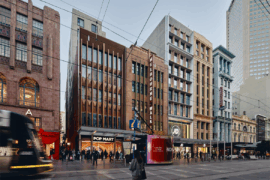
Merging two hotel identities in one landmark development, Hotel Indigo and Holiday Inn Little Collins capture the spirit of Melbourne through Buchan’s narrative-driven design – elevated by GROHE’s signature craftsmanship.
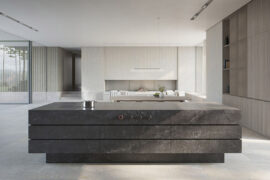
For those who appreciate form as much as function, Gaggenau’s latest induction innovation delivers sculpted precision and effortless flexibility, disappearing seamlessly into the surface when not in use.
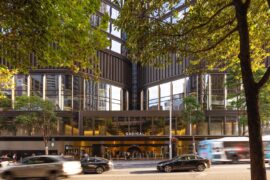
Rising above the new Sydney Metro Gadigal Station on Pitt Street, Investa’s Parkline Place is redefining the office property aesthetic.

London-based design duo Raw Edges have joined forces with Established & Sons and Tongue & Groove to introduce Wall to Wall – a hand-stained, “living collection” that transforms parquet flooring into a canvas of colour, pattern, and possibility.
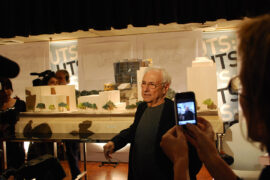
We republish an article in memory of the late architect by UTS, whose Dr Chau Chak Wing Building was Gehry’s first built project in Australia. The internationally revered architect passed away on 5th December.
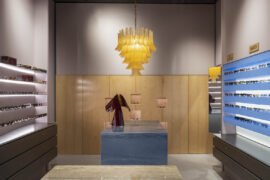
A calm, gallery-like boutique by Brahman Perera for One Point Seven Four brings contemporary luxury and craft to Strand Arcade.
The internet never sleeps! Here's the stuff you might have missed

A lighter, roomier feel in your space can start at your window.
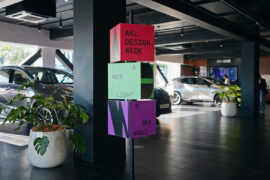
Auckland Design Week returns for its third edition in March, unveiling an expanded programme and a renewed focus on the relationship between people, communities and the places they shape.